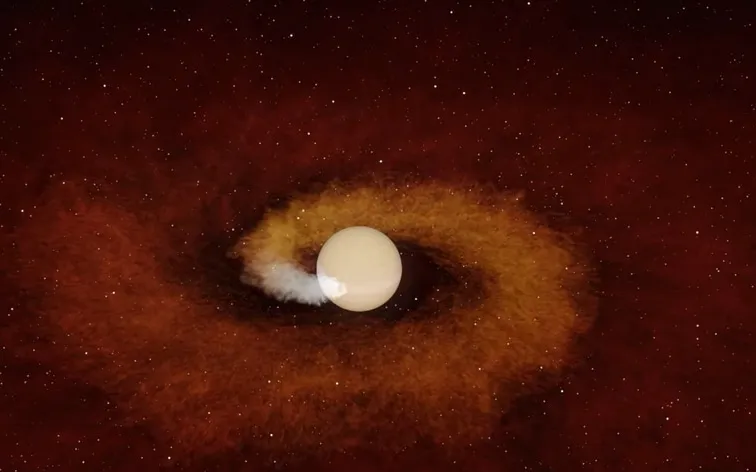NASA Astronomy Picture of the Day 6 June 2023: Star Destroys Planet
Stars derive their energy from the fusion of hydrogen into helium in their interiors. Although most stars have a lifespan of billions of years, larger stars have a shorter lifespan. When a star exhausts its fuel, its core collapses, causing every proton and electron to merge into a neutron. This process creates the densest object known to humanity, a Neutron star, which has the mass of a sun compressed into the size of a city, according to NASA. While Neutron stars are not typically associated with the end of the world, the 2020 event changed that.
Today’s NASA Astronomy Image is an animation of the Sun-like star ZTF SLRN-2020 engulfing one of its planets. Although planets are known to end up collapsing into the star they orbit, this phenomenon was first seen directly during the 2020 event when a planet collapsed into ZTF SLRN-2020. According to NASA, ZTF SLRN-2020 is located about 12,000 light-years away from Earth, towards the constellation Aquila.
This wonderful depiction was created by K. Miller and R. Hurt of Caltech’s Infrared Processing and Analysis Center (IPAC), better known as Caltech.
NASA description of the image
It’s the end of the world as we know it. More specifically, the sun-like star ZTF SLRN-2020 was seen eating one of its planets. While many planets eventually die as they orbit their central star, an event in the 2020s involving a Jupiter-like planet was the first time it had been seen directly. The star ZTF SLRN-2020 is located about 12,000 light-years away from the Sun towards the constellation Aquila. In the presented animation of the accident, the gaseous planet’s atmosphere is depicted for the first time slipping away as it skates on the outskirts of the star magnet.
Some of the planet’s gases are absorbed into the star’s atmosphere, while some are expelled into space. By the end of the video, the planet is fully engulfed and falls into the center of the star, causing the star’s outer atmosphere to briefly expand, heat up and brighten. One day, in about eight billion years, planet Earth may turn into the sun.




